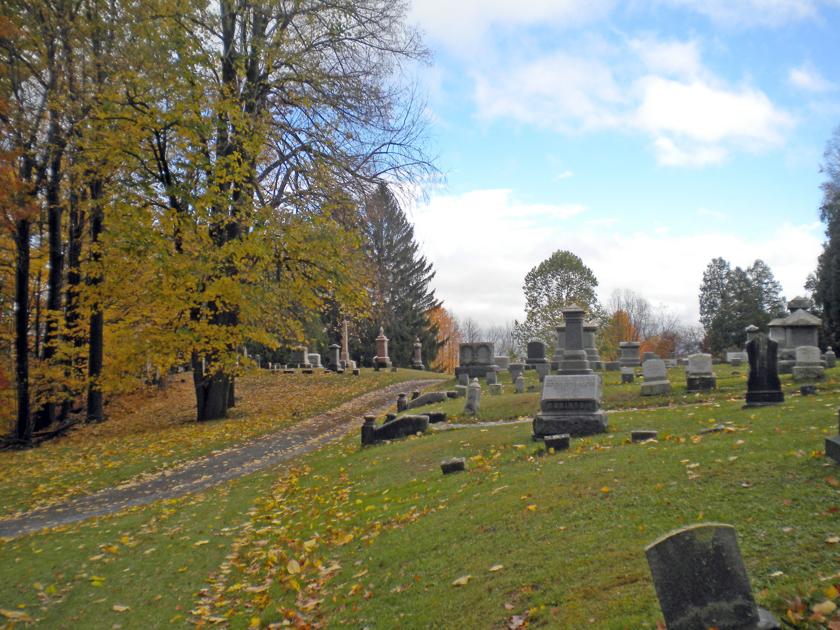[ad_1]
Editor’s Note: The following article reflects the author’s position on the subject from a historical perspective. Wertis also served as the cemetery superintendent for seven years and is currently a director of the Grove Cemetery Association.
Grove Cemetery came into being because the old one-acre cemetery belonging to the Presbyterian Church on Main Street in the village of Trumansburg was running out of space during the first half of the 1800s. Prominent local citizens applied to New York State for a charter to establish a new cemetery in 1846, but made its submission too late for action this legislative season. The following year, the state legislature passed the “Rural Cemeteries Actâ€. This allowed for the formation in 1847 of a local cemetery association… a non-profit society… which has persisted to the present day.
Almost immediately after the establishment of a constitution and by-laws and the election of directors, land was purchased in the summer of 1847 … eight acres of Smith Durling’s rail-fenced cornfield just north of Halsey’s Woods and on the north side of Falls Road. Durling retained the right to “take out the corn before October 1†and he also “reserved the middle and eastern fence railsâ€.
It is recorded in the minutes book of the cemetery associations that “after the purchase of the lot last fall, the stumps were all pulled up, the ground plowed and beautifully leveled”. Then, “at the opening of the spring, the roads were leveled and rolled up and between three and four hundred trees were planted on the main avenues.”
The term “rural cemetery” is applied in another sense to the history of cemeteries in America. Many early cemeteries were established on family estates or in church yards… and those small areas were filling up… similar to the situation in the village of Trumansburg but on an even larger scale. Thus, large areas were bought outside the big cities to be converted into cemeteries.
These cemeteries were designed to have the look and use of a park … think Boston’s Mount Auburn Cemetery … Rochester’s Mount Hope Cemetery … Greenwood Cemetery in Brooklyn … and Albany rural cemetery … all established between 1831 and 1841. They were built with winding roads through hilly topography, with ponds, streams … were well landscaped with trees and shrubs … and of course with monuments and tombstones. They were designed to be beautiful permanent resting places, but also as “cultivated woodlands†to be visited by the living looking for a respite from the not so beautiful urban built environment. They were the perfect place for a family outing, the place to cross in a buggy or sled for those who ran, or a place to stroll in quiet contemplation of the beauty of nature.
The founders of Grove may have been familiar with the “rural cemeteries” of large cities, or perhaps just wanted their cemetery to be a place of beauty by landscaping standards of the day. The Cemetery Association has preserved landscape plans that define and name avenues, walks, and views – think “Sunset Drive”, “Evergreen Avenue” and “Vista Bluff”. The current board of directors, under the leadership of board chairman David Allen, follows an annual tree replacement plan and is in the process of reinstalling the stone road signs that have disappeared over time. Their return will be a step in the continuation of the welcoming spirit with which the cemetery was created so many years ago.
[ad_2]

